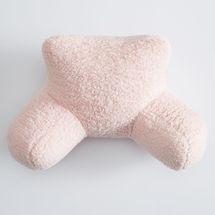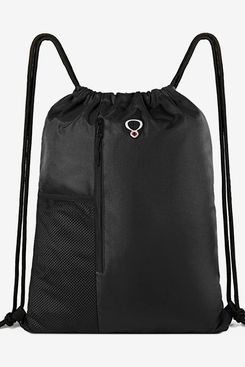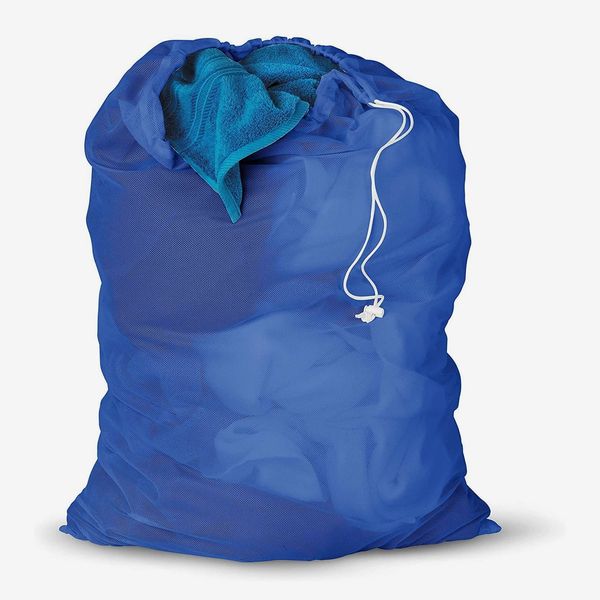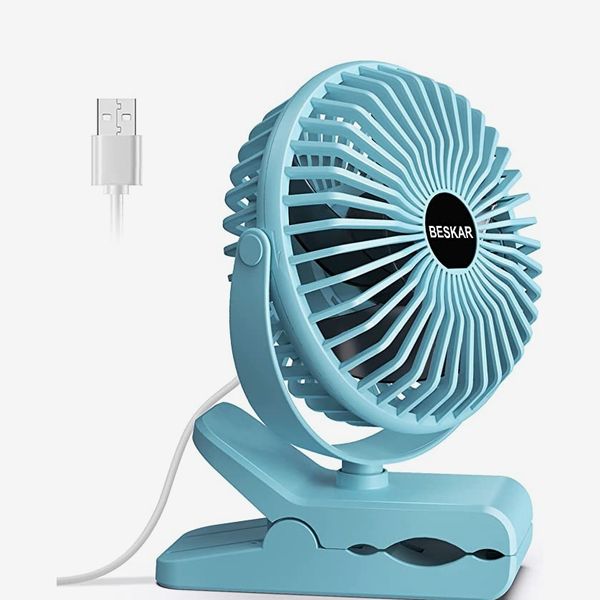
In this article
If there’s an unpleasant part of summer camp, it’s figuring out what to pack. Yes, most sleepaway camps send detailed packing lists. They’re helpful for giving you general categories, but what if you want to know the best sunscreen or hiking boots? And there’s more to think about than just checking off all the practical stuff: What sandals will every camper (and counselor) be wearing? What bunk decorations will kids be clamoring for? What games might break the ice for first-time campers looking to make new friends?
The tip we heard most often was not to bring anything you wouldn’t mind losing or ruining. As Julie Cole, mother of six camp-aged kids and co-founder of Mabel’s Labels puts it, “Don’t spend a fortune on camp clothing, it will get trashed.” But the experts also say it’s worth the risk to pack a keepsake or two. Comforting items that remind kids of home — like a stuffed animal, a favorite book, or photos of friends, family, and pets — will go a long way toward curbing anxiety and homesickness.
To help you get organized, we spoke to 19 camp experts, including camp owners, camp directors, camp counselors, and parents of kids going to camp this summer about the best, most useful things you’ll definitely want to pack in their trunk or duffel bag. They suggested giving your kids some input and getting them involved in the process as well: “We always recommend the kids be a part of the packing so that they know what is coming to camp and they get excited about it,” says Robin Wenczl, a parent liaison at Camp Iroquois Springs.
To that end, we cover a lot of different stuff in the list, below. To navigate it more easily, you can click the links in the table of contents to jump directly to what you’re most interested in.
Trunk or duffel bag
Before you start laying out swimsuits and folding underwear, you’ll need something to pack everything in. Anything big should be fine, but you’ll want to make sure to account for the specific circumstances of your camp. “One of my best friends runs a camp where they sleep in cabins with open walls and just a roof. They require a trunk because it just keeps their stuff safe and it’s waterproof,” says Kayla Weissbuch, co-founder and executive director of Brave Trails in California. “But we actually recommend a rolling duffel bag because our campers transport their own luggage to their cabin on opening day, so something with wheels is a lot easier for them.” If you’re in doubt about the requirements at your camp, just call them for guidance. Here are a few solid options in the two biggest camp luggage categories.
If your child’s cabin has drawers or cubbies available to store clothing, chances are you’ll want to use a duffel bag rather than a trunk, since they’re easier to transport and fold flat for easy storage under, say, a bunk bed. Cole finds packing in duffel bags more convenient than trunks and likes that her kids can use them for many other things. “The camp trunk is a staple, but I find them heavy and awkward. My kids all empty out, clean, and Febreze their hockey bags instead. They are lightweight and carry all the camp stuff,” she says. Although these aren’t hockey bags, we like these duffels, which have wheels for easy transport and lots of pockets.
According to former camp counselor Steven Mumford, his wife (whom he met while working at a camp), and their two teenage daughters, East Coast kids going to camp for two weeks or more will want a trunk. “A good old-fashioned foot-locker-style trunk is best. It should be stout enough to support your kid’s weight if stepped on around the edges while climbing up to the top bunk,” Mumford says, adding that his 14- and 17-year-old daughters give bonus points if the trunk is pretty inside or can be decorated with contact paper. Writer and mom of two Alexandra Lange recommends this classic camp trunk from CampBound, which she is hoping will last long enough for her kids to take to college.
Bunk décor
Even if they’re staying only for a week, campers love decorating their bunks to show their personality and make it feel a little more like home. “I know that it’s really big with teens,” says Kayla Weissbuch, founder and executive director of Brave Trails, which runs camps designed for LGBTQ+ teens. “Our campers really love to bring like their pride flags, but for other camps it might be a sports team flag or a poster of their favorite music artist. It just depends on the camper. Sometimes there’s so much decoration, you can barely find the camper.”
No matter how old campers are, nearly everyone we consulted said that packing a stuffed animal is a good idea. Cole says a child’s favorite lovey or stuffy will comfort them if they start to miss home, and Sarah Kurtz McKinnon, co-founder of the Summer Camp Society, says even some counselors will bring one. Weissbuch told us that most of her campers bring Squishmallows because they’re cute and double as an extra pillow. “I know it seems a little silly for teenagers, but lots of them bring stuffed animals to camp. It makes the bunk a little bit cozier.”
Both Wenczl and Lindsey Binstock, an adviser with Camp Experts, noted that many campers will also bring a fun decorative pillow “with bright colors and designs” to liven up their bunk, and that a “husband” pillow for leaning against while reading in bed is an especially popular choice. We previously recommended this Pottery Barn Teen pillow and cozy cover in our gift guide for tween girls.
Another unanimous recommendation is battery-powered fairy lights (most bunks don’t have outlets available to campers) and, of course, extra batteries. Amit Bhattacharyya, a parent of two and the former Vox Media head of data science, says, “We’ve noticed over time that the things our daughters want the most are not iPods or whatever. It’s a set of fairy lights to decorate their space. They’re not particularly expensive and not particularly bulky either and they just make them really happy.” According to Brooke Cheley-Klebe, camp director at Cheley, where kids sleep out in covered wagon, “I think the fairy lights help them feel like they’ve made a little home around their bunk.” As for which lights to bring, that depends on the camper. Doug Sutherland, a father and the executive director of Brantwood Camp in New Hampshire, bought unicorn-shaped fairy lights for his daughter to bring to camp two years ago, and Mumford’s daughters prefer more basic sets.
Some camps will let you hang things with push pins. Others will ask that you use sticky tack so you don’t damage the walls. But Mumford, Cheley-Klebe, Weissbuch, and Karen Aronian, an education consultant and mom of two, all recommend packing several rolls of tape for decorating bunks and to share with fellow campers. “It doesn’t matter how much tape I send. It’s always gone when I come pick them up,” says Aronian.
Gear
Going to horseback-riding camp obviously requires different gear than a summer spent rock climbing or hiking, but there are a few things you should pack no matter what kind of camp you’ll be attending. Above all, our experts said, it’s important to label your kids’ stuff — especially the water bottle — so it doesn’t get lost or mixed up with another camper’s.
Eight of our experts recommend packing a Crazy Creek chair for free time, camping out, and attending evening events like talent shows or movie nights. According to Mumford, you can sometimes get a “lower-quality version” of the chairs at the camp store, but in addition to being not as good, they’re also usually more expensive.
A drawstring bag is highly convenient for toting stuff around camp: “They’ll put their gear in it and go around for the day without having to go back to their bunk,” says Camp Experts adviser Emily Salant. “So if they have tennis and softball that day, they’ll put their tennis racquet and softball glove in there with their water bottle and some sunscreen, and they’re good to go for the whole day.” According to Wenczl, many camps will also organize special field trips to an amusement park or water park, so a drawstring bag comes in handy on those excursions as well.
Cheley-Klebe, Kurtz McKinnon, Sutherland, and Kimberly King, a kindergarten teacher and mom of two, recommend a headlamp instead of the traditional flashlight because it keeps your hands free while helping you see in the dark. King says she packs them for campouts, reading after lights out, trips to the bathroom at night, and playing flashlight tag.
Though we have written a lot about the popularity of Hydro Flasks and S’well water bottles in the past, the consensus choice here was a classic wide-mouth Nalgene. They are a lot less expensive, something most parents told us was an important factor in shopping for camp, since so many things never make it back home. Nalgene bottles also have a handy loop that makes them easier to carry, among other things. According to Mumford’s daughters, whom he asked to weigh in on the debate, “S’well is great for school, but you want a loop to anchor the friendship bracelet you’re working on, or to clip to a belt loop with a carabiner.” Plus, they are endlessly personalizable with stickers.
Salant adds that she’s noticing a lot of kids “bringing a Gatorade squirt bottle rather than the nicer ones” because it’s “gonna get really gross. They never wash them.” These bottles are cheap, ubiquitous, and can “easily be replaced next summer.”
Free-time activities
“I think it’s important for kids to have a project they can go to when they want some time to reflect or reenergize from a rush of social interaction,” says Lindsey Charbonneau, camp counselor and co-lead of Adventure Ready Girls. The activities your camper likes best will depend on their individual interests, but classic camp crafts like friendship bracelets are always a good choice. As Charbonneau points out, they take multiple days to create and can be done anywhere if temporarily tied to a water bottle.
Most camps will have embroidery floss (the colorful string used to make friendship bracelets) available as part of camp arts-and-crafts activities, but you might want to pack some, too, just in case. Former Strategist senior writer Karen Adelson got back into making friendship bracelets during the early days of the pandemic, and this is the embroidery thread she used and recommends.
More than half the experts we spoke to suggest packing some sort of journal for campers to write and draw in, whether it’s a traditional diary, something camp-themed, or even a plain notebook. We like Aronian’s idea of sending a pack of mini composition notebooks that can be shared with other campers or passed around the bunk and used as mini address books for keeping in touch after camp.
Kurtz McKinnon; Cole; mom of two Lori Rosenfeld; and Allison Klee, camp director at Camp Stomping Ground in Middle Gove, New York, all recommend packing fidget toys to give campers a soothing activity that helps process big feelings. “There are a bunch of different styles, but the ones that look like permanent bubble wrap are very popular,” Rosenfeld says. This set of 4 comes with multiple shapes that could be shared among siblings.
Since campers won’t be able to take pictures of their new best friends with a phone, five of our experts recommend packing a Polaroid or a disposable camera. Both Mumford’s and Bhattacharyya’s daughters have requested Polaroid cameras for camp, along with two 10-packs of film. “Consensus was that 10 is not quite enough and more than 20 is a little obnoxious,” says Mumford. King and 15-year-old camper Phoebe prefer disposable film cameras, however. Phoebe says they’re very popular and have replaced Polaroids at her camp.
Traditional “getting to know you” activities are a camp specialty, but for older campers, it’s worth bringing your own, more unique versions. Weissbuch says her campers are all really into astrology and tarot cards, which she calls “a fun, lighthearted way to make friends.”
Cole tells us that her son isn’t the most outgoing camper on the planet, so she likes to pack card games like Exploding Kittens that he can share with his bunkmates. That way, “when they have quiet time, my kid will have a few activities that his friends might want to join him in, setting him up for social opportunities,” she says.
Wenczl, Binstock, and Salant all report that wheeling and dealing Jibbitz — little charms that stick into the holes of Crocs — is all the rage with campers these days. “They love to collect and trade them. They’ll sit there with their friends going ‘I have that one, you want that one,’” Binstock says, so it’s worth sending your child to camp with a pack or two so they’ll be in a solid position to secure their favorites.
Clothes
The advice we got around clothing can be summed up in two parts: Pack things that are comfortable (and already worn-in), and don’t be surprised if they don’t all come back. Along with stressing the importance of packing for inclement weather, our experts also said theme days and color wars are still very popular, so you’ll want to pack any brightly colored clothing, costumes, and even wigs and makeup you have lying around at home.
Waterproof shoes that dry quickly are a camp necessity, and most of our experts said that anything closed-toe with an ankle strap is fine. Of all the recommendations we got, Crocs were by far the most popular. Ten people recommended them because of how comfortable they are and because they are such a huge camp trend. “It’s what the counselors were wearing last year and two years ago. Whatever the counselors were doing two years ago, that’s what kids will really want this year,” says Kurtz McKinnon. Bhattacharyya likes that Crocs can serve multiple functions at camp, as opposed to flip-flops or shower slides, meaning his daughters pack less. Weissbuch also highlights this versatility, saying, “We expect Crocs to be pretty big this year. We don’t allow flip-flops for walking around camp other than in the cabins. So they are a really nice in-between. They’re closed-toe, but they’re still airy and open. If they get wet, they dry in a second. You can wear them with or without socks and they still have that ankle strap for a little bit of ankle protection.” Plus, the kids need somewhere to display all the Jibbitz they’ve acquired!
Many camps will host an end-of-summer banquet where campers will dress up in slightly nicer clothes. “The boys, instead of wearing regular athletic shorts, might wear golf shorts and a polo. The girls may put on a skirt or dress,” Wenczl says. “It’s a fun opportunity to dress up. Not so formal, but just as if they’re going to a summer party.”
Tie-dye is still popular at a lot of camps, so two of our experts suggest packing blank white clothing to use. Kurtz McKinnon says, “Sports bras are always fun for older campers.” She also recommends packing white T-shirts, bandanas, and anything else that the kid has permission to destroy/make their own.
Multiple experts cautioned not to overpack — “sometimes if you bring stuff that’s not on the packing list, they’ll send it right back home,” says Binstock — but if there’s one thing to pack more of rather than less, it’s socks and underwear. “I think we list like 24 pairs of socks,” Wenczl says. “The kids are changing a lot, they’re swimming multiple times a day. So we want to make sure that they have enough.”
To keep your kid’s dirty clothes from stinking up the cabin, King recommends packing a breathable mesh laundry bag. “The solid ones hold all that moisture and end up smelling,” she says.
Toiletries
We heard from everyone we talked to that camp staff are trained to deal with a range of personal issues that might arise for campers. That could be anything from losing a pair of glasses to getting your first period. So don’t worry too much. But our experts did say that if your child takes a specific medication, you should pack it in the pharmacy container rather than putting it in something else. This helps staff with valuable information about dosage and instructions. And according to Sutherland, whose daughter just got her hair braided, making sure your child has the right products will help them feel comfortable at camp. “Sending her with the products she needs to take care of her hair is really important,” he says.
Three of our experts specifically recommend a shower caddy with drainage, so that soap, toothpaste, and other products don’t get all mucky at the bottom. This one folds up so it won’t take up too much space in your trunk, and it’s mesh, so it will dry quickly after each shower.
Rather than packing separate bottles for shampoo, conditioner, and body wash, “I’ve found a three-in-one, especially one with a pump, goes a long way,” Salant says. “Try to make it as simple as possible for the little kids who are first-time campers.” Even for older kids, one bottle is certainly easier to keep track of “than having three different things to have to worry about.”
Sunscreen is a must for campers because they spend so much of their time outdoors. But before you go buying sunscreen in bulk, Binstock advises double-checking the camp’s nut policy “since some camps are completely nut-free, and if the sunscreen has any type of coconut in it, you can’t send it,” she told us. Another thing to keep in mind is avoiding spray-on sunscreens: “I know it’s really convenient, but unless you’re really rubbing it in, campers tend to come out with patchy areas,” Weissbuch says. Kurtz McKinnon suggests having campers, especially younger ones, practice applying it themselves before leaving for camp. We recommend this mineral sunscreen in our roundup of the best sunscreens for kids and babies.
Instead of packing one super-thick beach towel, Cole packs two of these thin, quick-drying towels because they save space and ensure that your kid always has a dry one at the ready.
Bedding
For the most part, cabins won’t have air-conditioning. And depending on where your camp is located, some nights might be very hot while others are pretty chilly. So, as with clothing, you should pack layers of bedding. And because it will help you feel at home in your bunk, everyone recommends bringing your own pillow.
Most camp beds are twin-size and extra long, so unless your camp tells you differently, pack with that in mind. (Even if the beds turn out to be standard length, long sheets can be tucked under.) This set comes with a fitted sheet, top sheet, and a pillowcase.
“Don’t bring a comforter. It just takes up a lot of space,” says Sutherland. Instead, he and three others recommend bringing a fleece blanket that can be thrown in the washing machine. “Even if it’s not a pee accident, your child’s bedding might need to be washed while at camp, so everything should be small enough and machine washable so a counselor could wash it without ruining it,” says Kurtz McKinnon.
The majority of our experts say you should pack a sleeping bag for campouts. It also serves as an extra layer in case it’s extra cold in the cabin one night. “The ones that are more rectangular, as opposed to the mummy type of sleeping bags, work better because you can open up the rectangle and you have a blanket,” says Sutherland. He says sleeping in the sleeping bag is actually considered a safety hazard in cabins, because a zipped-up bag restricts movement and can be difficult to escape from in the event of a fire, but if you unzip your sleeping bag all the way, it isn’t an issue.
Miscellaneous extras
These items aren’t essential to having a great time at camp, but could make the time away from home go just a little bit smoother. “Really, the most important thing a camper could bring to camp is just themselves as a person,” says Andy Gadah, one of the directors of Maine Teen Camp. “Bring a sense of enthusiasm and a desire to dive into the summer!”
If the camp is located in an area with a hot, humid summertime climate, Gadah suggests bringing a clip-on fan to attach to their bunk (battery operated is best). “Those are life-savers for the hot, muggy nights in Maine,” he says.
Gadah also recommends earplugs and sleep masks, since campers will be rooming together and may have different sleep habits. “We have a set lights-out time at 11 o’clock, but some campers may want to try to get to sleep a little earlier,” Gadah says, so the mask and earplugs will help block out any disruptions from their bunkmates.
No kid is going to die from a mosquito bite, but itchy bumps and welts could certainly become a distracting annoyance. Most camps will provide basics like sunscreen and bug spray, but if you want to bring your own, Strategist contributor Aleta Burchyski suggests this Kinfield one that smells so good that “I’ve caught my husband using an occasional spritz as cologne.”
In the event they do become a bug buffet, Strategist writer Lauren Ro insists that this handy doodad instantly makes mosquito bites and bee stings less irritating (it uses suction to extract itch- and pain-causing saliva or venom from the skin).
Camps will also often supply sports equipment, but for kids who are attached to a beloved tennis racquet or lucky baseball glove at home, they’re more than welcome to bring their own. “We don’t say that they can’t bring their own gear, but we don’t want to make families feel like they have to go out and buy things,” Wenczl says.
Though the majority of camps do not allow electronics, “some will allow devices without screens just to play music in the bunks,” says Binstock. Both Binstock and Gadah have observed campers bringing old-school iPods so they can enjoy some tunes while still being able to “disconnect and be present to enjoy the special moments at camp,” Gadah says.
The Strategist is designed to surface the most useful, expert recommendations for things to buy across the vast e-commerce landscape. Some of our latest conquests include the best acne treatments, rolling luggage, pillows for side sleepers, natural anxiety remedies, and bath towels. We update links when possible, but note that deals can expire and all prices are subject to change.



















































